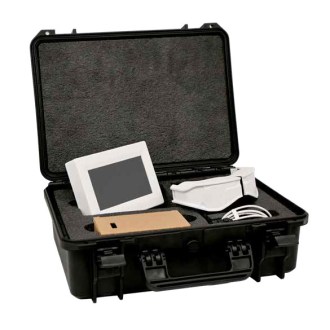Dry Eye Treatment
Published on the European Journal of Ophthalmology, goes and compares eye-light® technologies with pharmaceutical treatments (i.e., eye drops)—proving yet again the superiority of light therapy, especially in the long run (after 6 months).
Here below the main findings:
- Efficacy of Treatments: The study found that both the combined Intense Pulsed Light (IPL) and Low-Level Light Therapy (LLLT) and the hyaluronate sodium drops were effective in treating dry eye disease. However, the combined light therapy showed a statistically significant improvement over the drops.
- Tear Breakup Time (TBUT): The TBUT increased significantly in both groups, but the increase was more pronounced in the light therapy group.
- Schirmer Test: The Schirmer test results showed a significant increase in tear production in the light therapy group compared to the drop group.
- Ocular Surface Disease Index (OSDI): The OSDI scores decreased significantly in both groups, indicating an improvement in symptoms. However, the decrease was more significant in the light therapy group.

The study showed statistically significant improvements in ocular surface disease index score (OSDI) and symptom assessment in dry eye (SANDE) scores with our device, which were not observed in artificial tear users. In other words, patients are seeing and reporting improvements in their dry eye symptoms. Findings like this are crucial to motivating patients to continue treatment.

Espansione Group, a leader in non-invasive medtech solutions and a pioneer in photobiomodulation (PBM) technologies, is pleased to announce the publication of a pivotal study in Eye Journal, part of the Nature Portfolio:
"Photobiomodulation-induced choriocapillaris perfusion enhancement and outer retinal remodeling in intermediate age-related macular degeneration: a promising therapeutic approach with short-term results".
This study confirms the potential of LM™ Low-level Light Therapy (PBM), in improving both functional and anatomical outcomes in patients affected by Dry AMD.
Key Highlights
- Visual Function: patients treated with PBM gained +3.2 letters in BVCA, while controls showed no change (p=0.042).
- Structural Outcomes: a decrease in mean drusen volume of 0.003 ± 0.001 mm³ was observed in the PBM group (p=0.028).
- Choriocapillaris Perfusion: flow deficits in the choriocapillaries were reduced by -3.1 ± 1.4% following PBM (p=0.024), correlating with visual improvements (r=-0.54, p=0.002) and reduced drusen volume (r=-0.35, p=0.042).
Why It Matters
This is the first-ever demonstration of PBM-induced choriocapillaris perfusion improvement. It marks a major step toward establishing non-invasive PBM as a viable treatment for intermediate AMD.
Want to know more?
Access the full-length publication on Eye Journal and Access the Full Press Release!
eye-light®
Featuring both LM® LLLT technology and OPE® IPL technologies, to optimally treat most ocular surface conditions.
Huvitz HTG-1 Topographer
Reliable Measurement of Corneal Data Using Placido Disc Analysis Technology
me-check®
The easiest, quickest, certified medical device to screen for ocular surface conditions. Built from the ground-up to be...
my-mask®
Bring all the power of photobiomodulation through LM® LLLT in a portable, light yet effective package.










